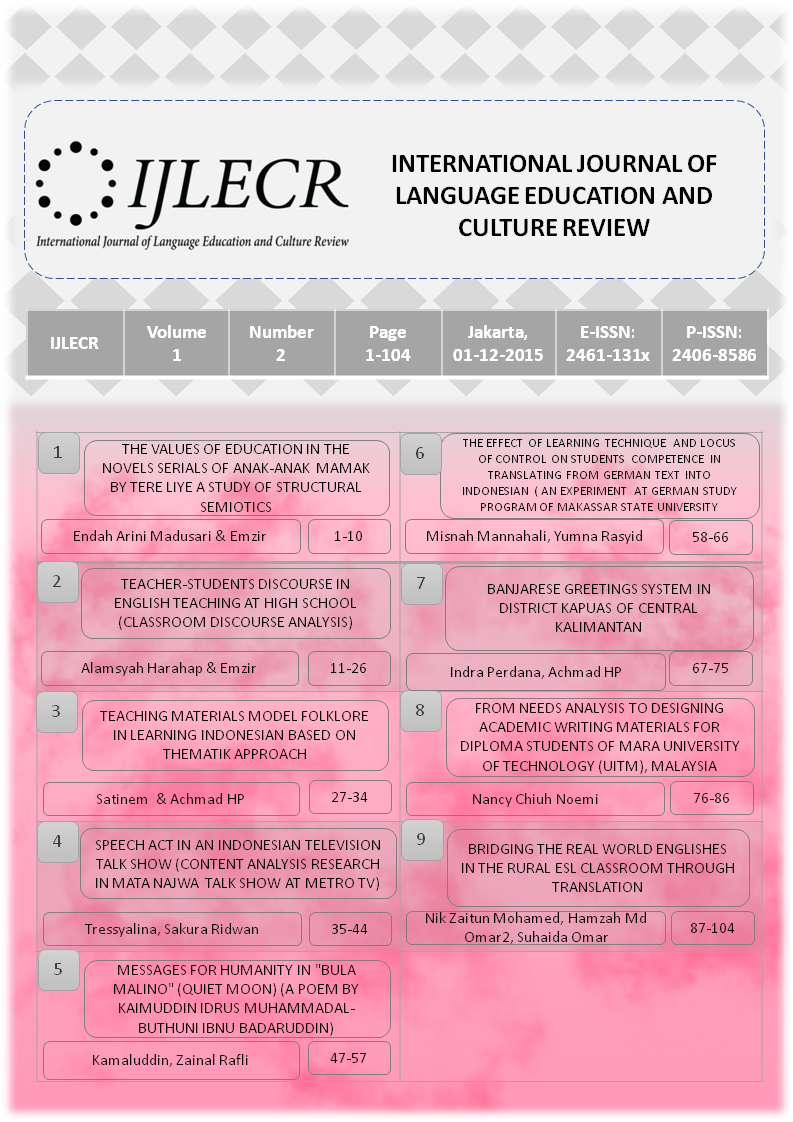BRIDGING THE REAL WORLD ENGLISHES IN THE RURAL ESL CLASSROOM THROUGH TRANSLATION
DOI:
https://doi.org/10.21009/IJLECR.012.019Kata Kunci:
Translation Pedagogy;, Pedagogical Translation;, ESL; World Englishes;, Rural EducationAbstrak
Translation can play a role in the development of communicative abilities since speakers are often engaged in the work of sharing and negotiating meaning. It fosters speculation and discussion, apart from developing abilities considered fundamental for communication, such as interpretation, negotiation, and expression of meaning. However, there are views against translation in the ESL classrooms even though the method has been applied in the pedagogical process. As a result, ESL students who are weak in English are not given the opportunity to excel in the second language from their own bilingual strength. This paper attempts to study and disclose in what ways pedagogogical translation in rural ESL classrooms in Sabah is reflected into practice, thereby assessing whether the gap between pedagogical translation and translation pedagogy has beeen been bridged. In this case study, five primary teachers were selected and their knowledge and practice of translation were assessed through qualitative content analysis in pre- teaching, while teaching and post-teaching activities. A translation framework has been designed and used in assessing the teachers’ performances in using translation. This pilot study reveals that teachers have translated from the first language (L1) into the second language (L2) as a means to help students to understand the content of the English lesson. They did not have adequate knowedge on translation strategies. Thus, the designed translation framework may be used by teachers as a guide in using translation in the ESL context.








